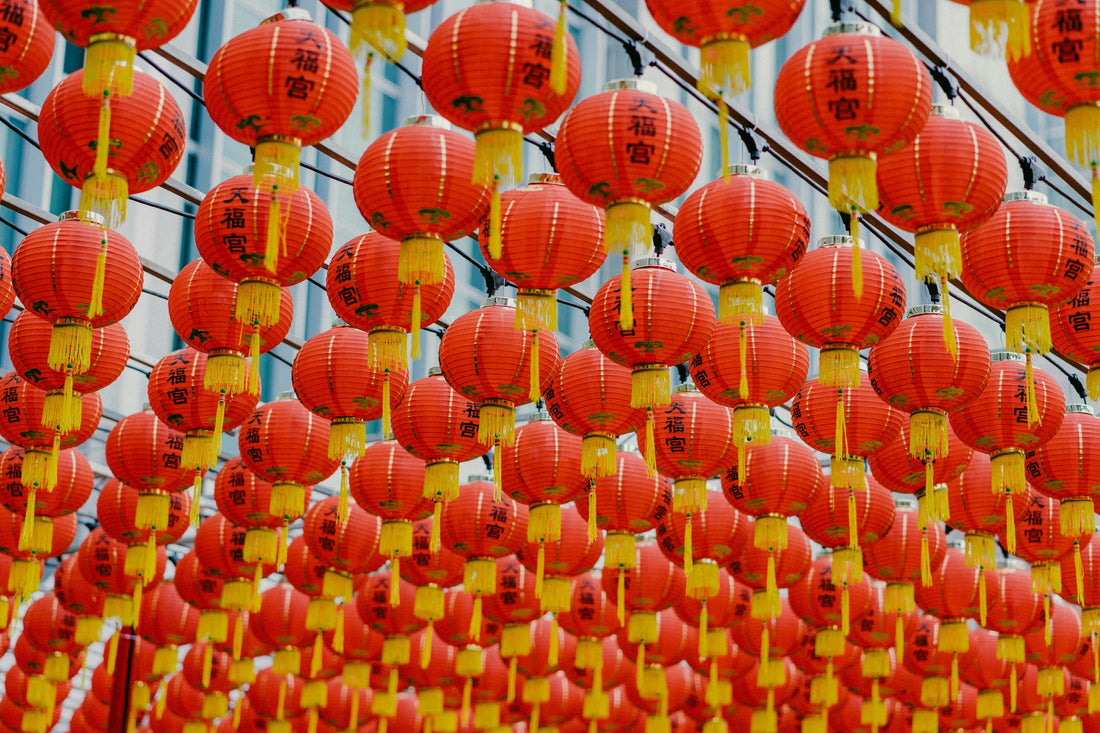
Lunar New Year vs. Chinese New Year: What’s the Difference? 🎊
Share
[5-7 min read]
Every year, as January and February roll around, you might hear people talking about Lunar New Year and Chinese New Year—sometimes interchangeably. But are they the same? Not exactly! Honestly, I was getting so confused that I had to dig in and do my research on this. While they are closely related, there are key differences based on history, culture, and the calendar they follow. Let’s break it down!
The Lunar Calendar vs. the Gregorian Calendar
To understand the difference, we first need to look at the Lunar Calendar. Unlike the Gregorian Calendar (which is the standard international calendar based on the sun), the Lunar Calendar is based on the moon’s cycles.
- A lunar month is about 29.5 days, making a lunar year roughly 11 days shorter than a solar year.
- To keep the seasons aligned, an extra month (a leap month) is added every two to three years—similar to how we add a leap day every four years in the solar calendar!
Because of this shifting cycle, Lunar New Year falls on a different date each year, usually between January 21 and February 20.
What Is Lunar New Year?
Lunar New Year is a broader term that refers to New Year celebrations based on the Lunar Calendar. Many Asian cultures celebrate Lunar New Year, but each has its own traditions and name for the holiday.
Some major Lunar New Year celebrations include:
🌕 Chinese New Year (春节, Chūnjié) – Celebrated in China, Taiwan, Hong Kong, and among Chinese communities worldwide.
🌕 Seollal (설날) – Korean Lunar New Year.
🌕 Tết (Tết Nguyên Đán) – Vietnamese Lunar New Year.
🌕 Tsagaan Sar (Цагаан сар) – Mongolian Lunar New Year.
Each country has its own customs, foods, and ways of celebrating, but they all mark the beginning of a new year based on the lunar cycle.
What Is Chinese New Year?
Chinese New Year (also called Spring Festival) is China’s specific celebration of Lunar New Year. It follows the Chinese lunisolar calendar, which combines both moon phases and solar terms.
- It marks the start of a new zodiac year, rotating through 12 animal signs (2025 is the Year of the Snake!).
- It lasts 15 days, ending with the Lantern Festival.
- Traditions include red envelopes (红包 hóngbāo), family feasts, firecrackers, and lion dances.
While all Chinese people celebrate Lunar New Year, not all Lunar New Year celebrations are "Chinese New Year." That’s why it’s more inclusive to say “Lunar New Year” when referring to the broader holiday celebrated across Asia. You can also call it the 'Spring Festival'.
Why the Distinction Matters
Saying Lunar New Year acknowledges that many cultures celebrate this holiday, not just China. While “Chinese New Year” is correct when referring specifically to China’s celebrations, using “Lunar New Year” shows respect for the diverse traditions of different Asian communities.
No matter what you call it, Lunar New Year is a time for family, renewal, and joy—and that’s something everyone can celebrate! 🏮🐍✨
Do you celebrate Lunar New Year? What are your favorite traditions? Let me know in the comments!
